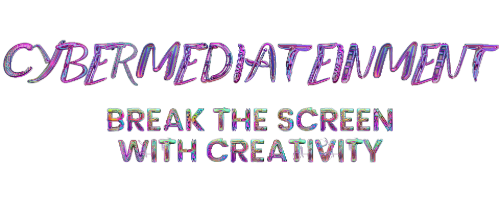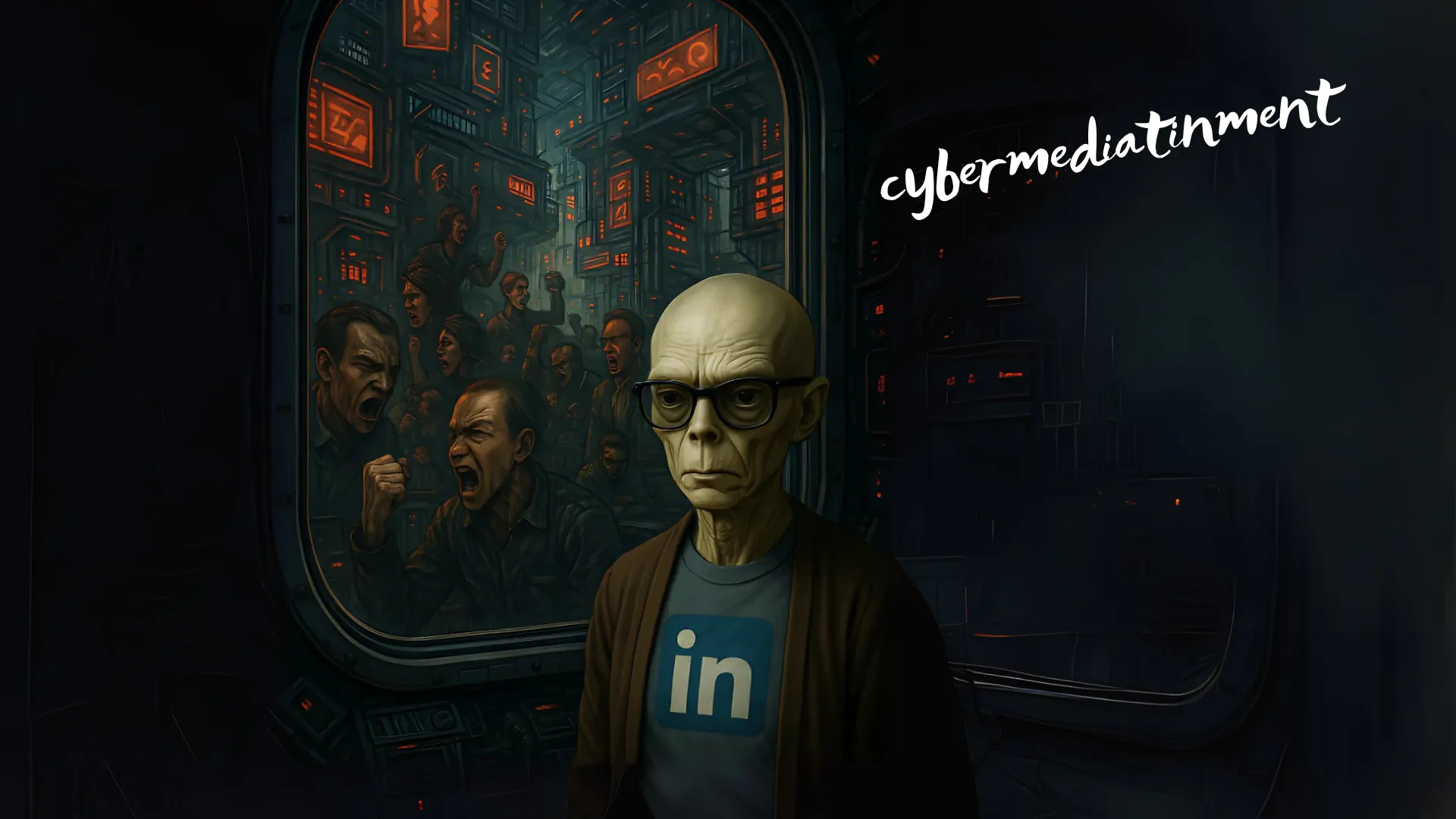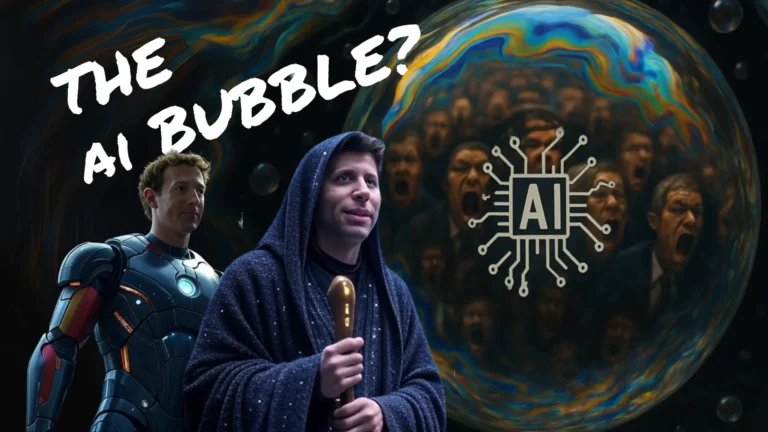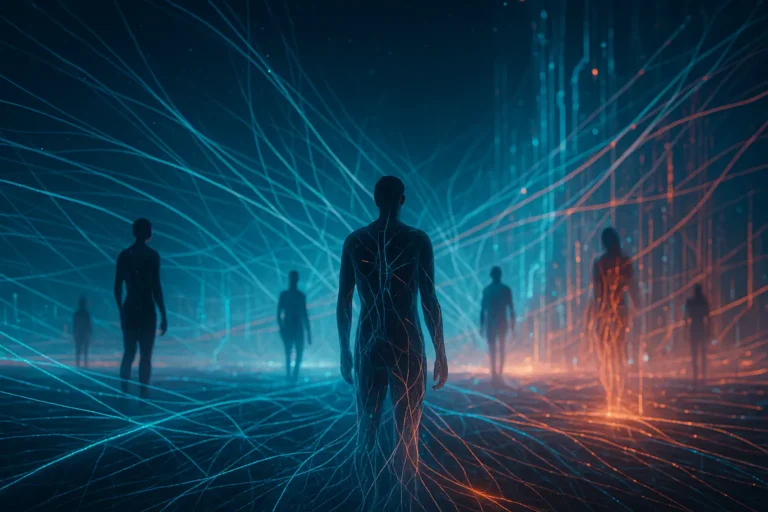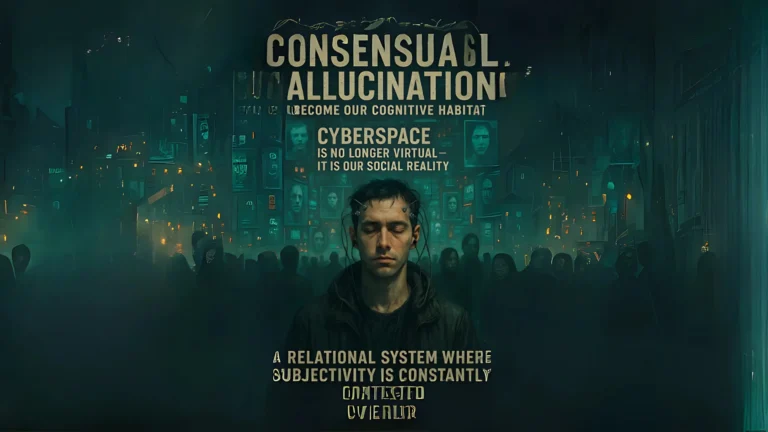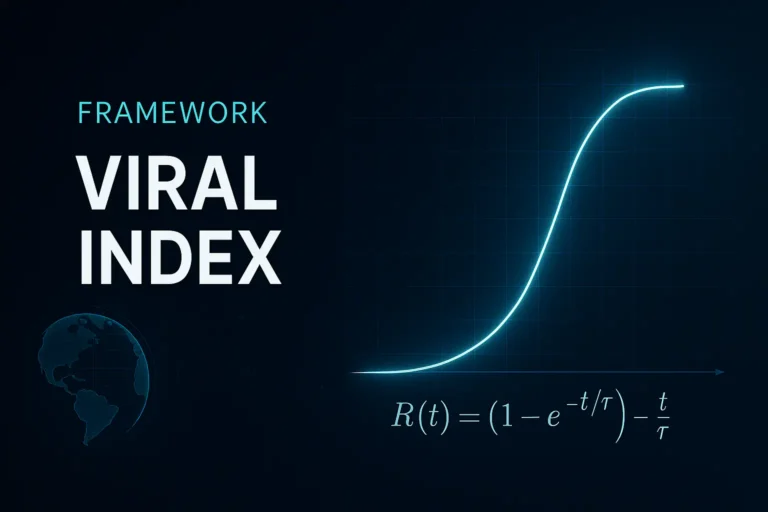The Toxic Ecosystem of Social Platforms: LinkedIn and the Commodification of the Soul
The Farce Becomes the Norm
LinkedIn is not just a social platform. It is the collective performance of performative professionalism. Here every gesture is calculated, every word optimized, every “authentic” story cut to fit engagement needs. Authenticity is talked about, but packaged like slide decks: in a standard format, ready for the feed.
While TikTok and Instagram offer more blatant narcissism, on LinkedIn narcissism wears the suit of competence. “Failure” becomes a narrative resource, vulnerability a slogan, resilience a hashtag. The goal is no longer to inspire but to become the model for accumulating status and social capital. It’s not enough to “be there”: you must be useful, consistent, successful. Don’t exist—optimize yourself.
The Social Theater and Total Alienation
LinkedIn excels at creating a fake divide between “professional” and “personal,” presenting itself as a temple of seriousness and merit. Behind this façade, however, lies yet another performance. Here there are no influencer outfits or dance routines, only pitches, case studies, and self-brand storytelling.
Commodification is sold as progress, competition as growth, acting as authenticity. This gives rise to a digital habitus that internalizes practices, language, and desires calibrated for visibility, distinction, and outshining others. Collaborating becomes competing, growing becomes acting: identity splits between who we are and who we must appear to be.
The result is deep and lasting alienation: the digital professional is perpetually on stage, forced to play a role scripted by others.
Social Platforms as Power Environments
Platforms are not neutral spaces we use at will. They are programmed environments that shape us, govern us, and suggest what to desire. Cyberspace—as Castells reminds us—does not reflect reality, it reorganizes it. We are conditioned inhabitants of digital ecosystems where power no longer flows from the top but seeps through architectures, algorithms, and affordances.
The platform decides which possibilities you can imagine, which stories you can tell, and which version of yourself you present. Every feature has its own logic: likes, reposts, reactions, visibility algorithms… Everything is designed to stimulate, distort, and reward. You don’t use Instagram; Instagram uses you.
Feeds are built to create addiction, trends to generate conformity, metrics to keep you trapped in a cage of intermittent rewards. The digital environment is not neutral: it’s a context that conditions behaviors and perceptions.
No one emerges unscathed from social media. Whether you want to express yourself, sell, tell your story, or learn—you’re playing on a field you didn’t build and can’t fully control.
As Buckminster Fuller suggested, every designed environment reconfigures our perceptual categories. Digital is no different: it molds us, changing how we see ourselves and the world.
Social Platforms and the Colonization of the Imagination
Platforms, in different ways, are candid about their demands:
- Instagram openly flaunts its craving for beauty,
- TikTok admits it only wants to entertain or distract us,
- LinkedIn is more insidious and refined: it promises growth, opportunity, success, but actually commodifies your identity.
It turns dignity into merchandise, presence into a product to be leveraged. In this new digital capitalism, attention is the real currency. On LinkedIn every interaction is an investment, every connection an asset, every post a value strategy.
Networking becomes a race to accumulate social capital, and the gamification of success turns the professional experience into a competitive, anxiety-inducing game.
LinkedIn as the Apex of Commodification
LinkedIn represents both the culmination and the point of no return of identity commodification. Here you don’t just sell products or services, but yourself. As Foucault taught us, the most effective power does not issue orders but shapes subjects ready to self-evaluate, self-promote, and self-surveil.
Personal branding becomes biopolitics: life itself turns into capital to be monetized, and dignity becomes the currency of exchange.
The Authenticity Paradox and the False Consciousness of Networking
The real paradox is that the more authentic you are, the less you get rewarded. Platforms demand true stories only if they work, if they move people, if they convert into reputational capital.
LinkedIn is the laboratory of false consciousness:
- Competition is called collaboration;
- Exploitation is called opportunity;
- Alienation is disguised as personal growth;
- Performance becomes authenticity.
Resistance and Critical Awareness
Critical analysis of cyberspace is not an intellectual luxury but an existential necessity: staying human today is not a nostalgic whim but a political act of resistance against algorithmic colonization of existence.
It means defending the very possibility of living and imagining ourselves outside imposed scripts, in the crack between what the platform wants and what we can still be.
FOLLOWTHEALGORITHM
:
Here criticism is already resistance. Here clarity is already choice.
The battle for our humanity is fought now, inside and beyond the feed.
